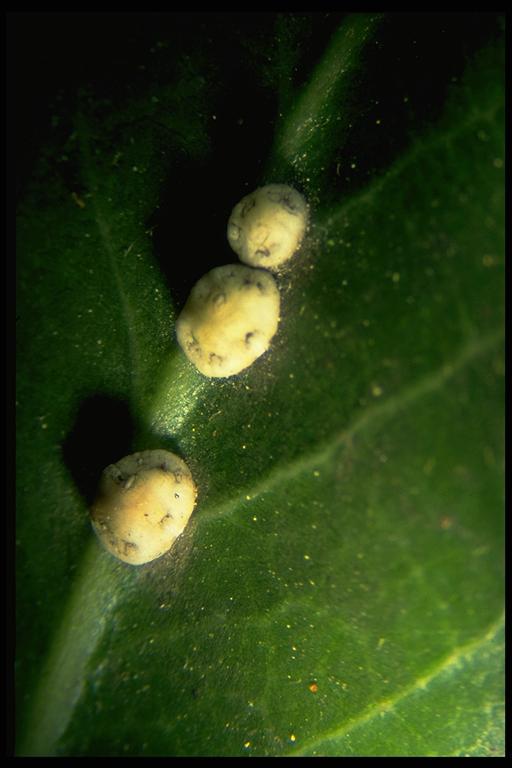
“Wax” scales, Ceroplastes sp. (Homoptera: Coccidae). Photo by Drees.
Common Name: “Wax” scales
Scientific Name: Ceroplastes sp.
Order: Homoptera
Description: “Wax” scales are globular and coated with an heavy layer of wet beige, pinkish, whitish or grayish wax. From the top view, they appear rectangular, oval or lobed at the base and they may grow to over 1/8 inch (Florida wax scale) to almost 1/4 inch (barnacle scale) in diameter.
Other species of wax scales occur in the state. In addition, there are a number of other scale insects in Texas. However, none resemble this group of species in shape or size.
Life Cycle: Intermediate. The winter is spent as adult females. Males are very rare or unknown for some species. Eggs are oval and orangish, and fill the inside of the female scale insect. When removing scale insects in spring (April), hundreds of eggs pour out. Eggs hatch in about 3 weeks over a period of 2 to 3 weeks. First stage (instar) nymphs, called crawlers, hatch from eggs and crawl to and settle on leaves, twigs and stems of host plants. After settling, nymphs begin to secrete wax in tufts around the body that give these scale insects a star-like appearance. Nymphs of the barnacle scale migrate from leaves to the woody tissue soon after molting to the third stage (instar). There may be two or more generations per year.
Habitat, Food Source(s), Damage: Wax scales infest ficus, gardenia, hawthorne, holly, ornamental pear, pyracantha and other landscape trees and shrubs. They are a minor pest of citrus. Wax scales injure plants by removing large quantities of plant sap. Sticky honey dew, secreted by these scale insects is colonized by a fungus called, sooty mold, causing infested plant parts to turn black and unsightly.
Pest Status: Also known as soft scales, (the Florida wax scale, C. floridensis Comstock, and barnacle scale, C. cirripediformis Comstock) have recently become a widespread problem on landscape plants in Houston and Austin; medically harmless.
For additional information, contact your local Texas A&M AgriLife Extension Service agent or search for other state Extension offices.
Literature: Johnson & Lyon 1988; Riley 1995.